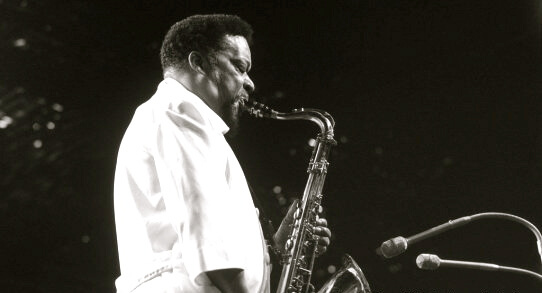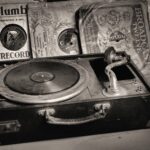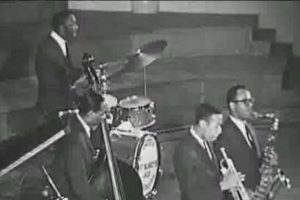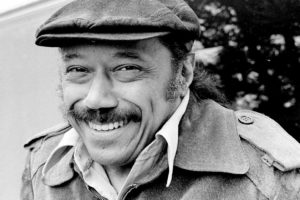Perhaps nothing is as soothing and peaceful as cool saxophone music, and Gene Ammons was a master. Ammons, known as “The Boss” decades before Springsteen came along, played with all the greats. That should be no surprise, since he was one of them.
Ammons lived from April 14, 1925 to August 6, 1974. Wikipedia starts its profile with the point that his music was rooted in soul and R&B, which made it accessible. It makes sense that this would be so considering that Ammons’ father was Albert Ammons, a well-known boogie-woogie piano player. Few jazz forms are as accessible (and, as a bonus, exhilarating) as boogie-woogie piano.
Ammons was born in Chicago. As with almost all of the giants, the names scattered through the bio become familiar very early on. In 1944, Ammons joined Billy Eckstine’s band, which also featured Charlie Parker and, later, Dexter Gordon. Three years later, he was leading a group at the Jumptown Club featured Miles Davis and Sonny Stitt. In 1949, Ammons replaces Stan Getz in Woody Herman’s Second Herd. The next year, Ammons and Stitt formed a duet. Eckstine, by the way, gave Ammons his other nickname, “Jug,” when straw hats ordered for the band did not fit.
The bio goes on to note the other greats Ammons played with as his career progressed. The dark side of the tale, however, is two stints in prison for narcotics violations. That apparently didn’t slow down his commercial success, however. Ammons, fresh out of Joliet in 1969, signed a big contract with Prestige.
The Wikipedia profile does a nice job of describing what differentiated Ammons. He, along with Von Freeman, founded the Chicago school of tenor sax. The style was influenced by Ben Webster and Lester Young and therefore was expressive. At the same time, it incorporated the changes that the bebop movement brought to jazz. Thus, he was instrumental in integrating the new techniques with the essential sound that audiences prize in tenor sax.
It’s interesting to see an individual artist such as Ammons in the context of his environment. In his case, that environment is Chicago. At the Encyclopedia of Chicago, William Howland Kenney posted an extremely interesting essay on the musical legacy of the city.
A key event was the World’s Columbian Exposition of 1893, which attracted ragtime pianists to Chicago.
The city’s central location and industrial heritage has made it a magnet for people in general and musicians in particular. The greatest example of this was the Great Migration of African-Americans from the south between 1916 and 1970. This influx led to an increase in venues in which music is played. These establishments – cafes, restaurants and so forth – were particularly dense on the South Side. Kenney points out that New York City specialized in songwriters; Chicago in performers. Both had plenty of each, of course.

There is a special connection between Chicago and New Orleans and the surrounding Delta region. Countless great musicians – including Louis Armstrong, perhaps the most important musician in American history – took the trek northward. Many stayed. Indeed, Wikipedia goes so far as to say that Chicago blues simply augments Delta blues with electrified instruments.
It would take the rest of this website to name all the great musicians that call or called Chicago home (and that’s quite a feat since websites are by definition endless). Some of the most recognizable musicians and bands: Chicago (go figure), Paul Butterfield, Kanye West, Muddy Waters, Benny Goodman, Willie Dixon, Gene Krupa, Common, Sam Cooke, Herbie Hancock, Little Walter, The Impressions, Otis Rush, Elmore James, Buddy Guy, Howlin’ Wolf, Lonnie Brooks, Luther Allison, Curtis Mayfield and Mike Bloomfield. There are of course many, many others – and the stream shows no signs of stopping. (And, by the way, virtually all of those folks are highlight at The Daily Music Break. It seemed silly to stick in hyperlink after hyperlink.)
Clearly, all genres are well represented in Chicago. If anything, the real heart and soul of Chicago may be the blues. It’s interesting and Ammons took jazz’s newest incantation at that point, bebop, and bent it toward the blues.
Above is “The Happy Blues,” which is the title track from a 1956 Prestige album. In addition to Ammons, the players are Art Farmer (trumpet), Jackie McLean (alto sax), Duke Jordan (piano), Art Taylor (drums) and Candido (congas). This is not Richard Smith’s “Happy Blues,” which also is worth a listen. I couldn’t find any information about “Confirmation,” which is below. The song was written by Charlie Parker.











Recent Comments